Hey guys! This is Part 2 of my two-part post on sales funnels. If you’re new to the concept of using sales funnels to make money, then read this first. When you’re done, come back here to learn how easy it is to make more money with them!
Sales funnels are a powerful tool for any business — especially those of you that provide health and wellness services to clients.
The truth is, without sales funnels, you’re going to spend a lot of time trying to recruit new clients and to convince them to use you over the competition. But with a sales funnel on your side, most of that work is automatically done through your website, email, and social media.
How nice does that sound?
Now, I know I’ve already explained what sales funnels are and why you should use them. So, today, I want to take an up-close look at automated sales funnels that work and give you some ideas for building one of your own.
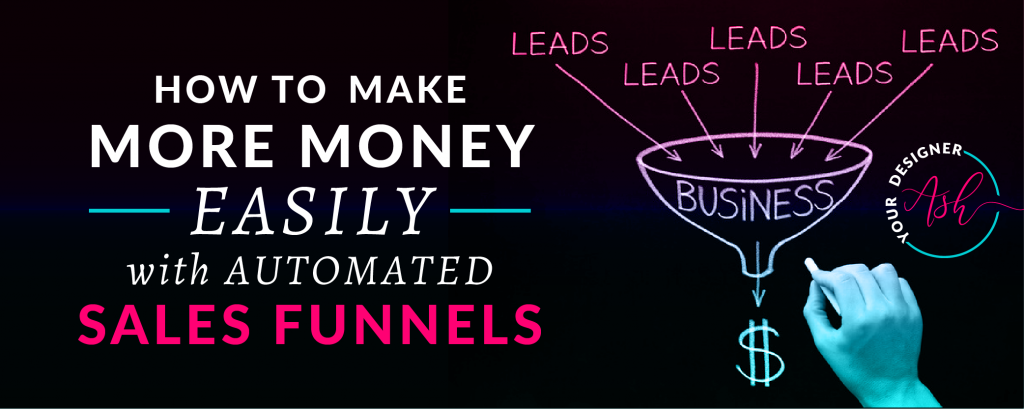
How to Make More Money with Automated Sales Funnels
Want to effectively and painlessly attract high-quality prospects and turn them into paying clients? Here’s what you’ll need:
Step 1: Hash out who your buyer persona(s) is
The whole point of a sales funnel is to attract the right people into it so you can maximize the money you make. To do that, you have to understand who those right people are, so you can design an offer they won’t want to say “no” to.
Step 2: Get a professional website
There are so many reasons why you should have a professional website, independent of your sales funnel. So, if you don’t have one yet, that’s got to be your first step.
Here’s the website for speaker, blogger, and health coach Mik Zazon, for example:
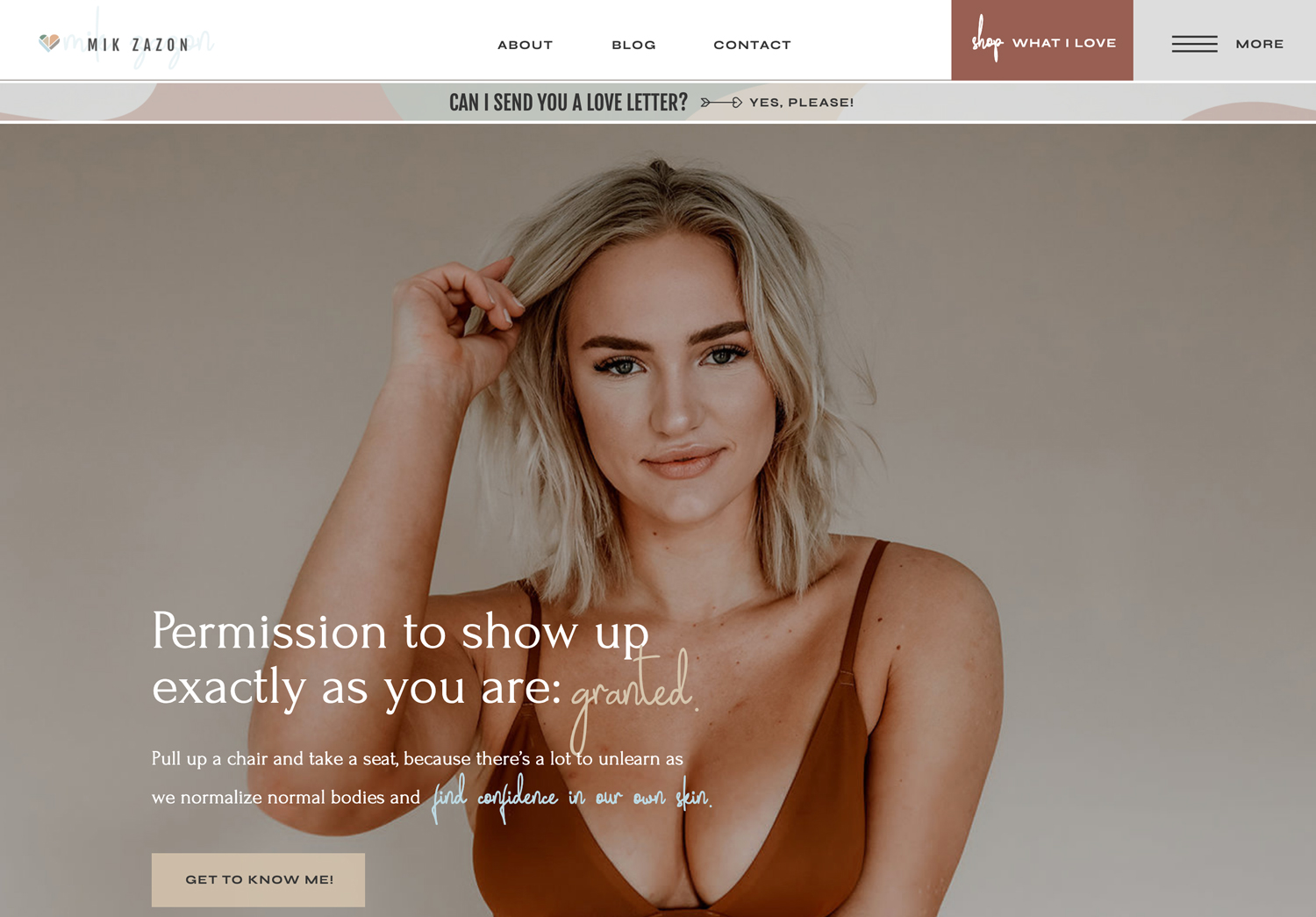
There’s much more here than just a product or program she’s selling. You can learn about Mik, what she’s on a mission to do, get personal insights from her blog, and much more.
This is the place to tell your story and start planting those seeds of trust with your ideal client.
Note: Depending on the type of sales funnel you intend to build, you might not need to build a separate website for your sales funnel. In fact, your entire brand can revolve solely around your sales funnel and product just as it does for Leah Joan Lifestyle & Fitness:
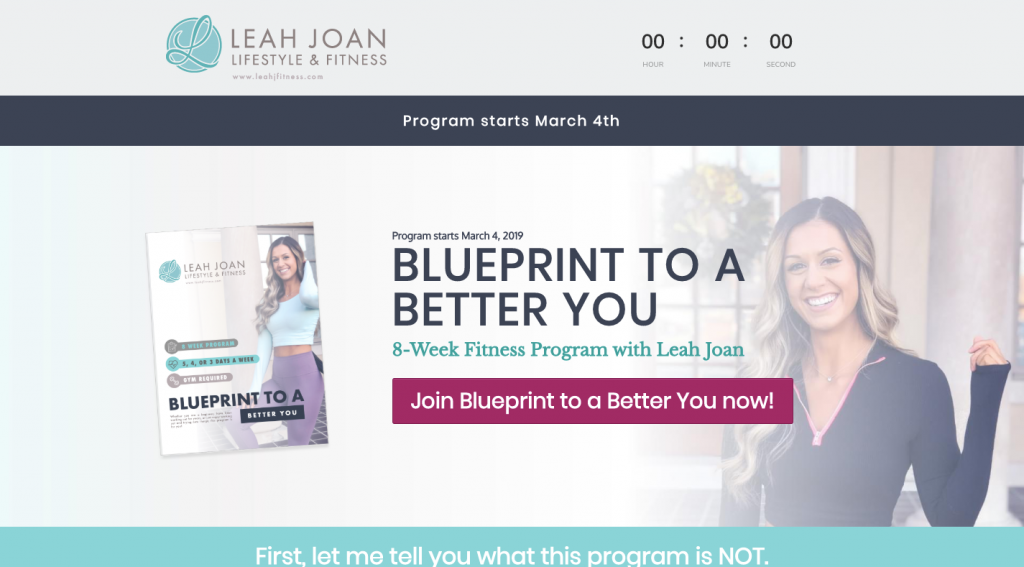
Keep in mind that a standalone sales funnel is best if you’ve already built a solid reputation for your business as Instagram star Leah Joan has done. And if that is the case, skip down to Step 4.
If you’re not quite there yet, don’t sweat it. The 7-step sales funnel detailed here will allow you to achieve similar results! Move on to Step 3.
Step 3: Figure out what your enticing offer is going to be
The better you get to know your clients — their needs, their desires, their goals — the easier it’s going to be for you to create the offer that inserts them into your automated sales funnel.
Take Mik Zazon’s website. This is the promotional pop-up that invites leads to enter the sales funnel:
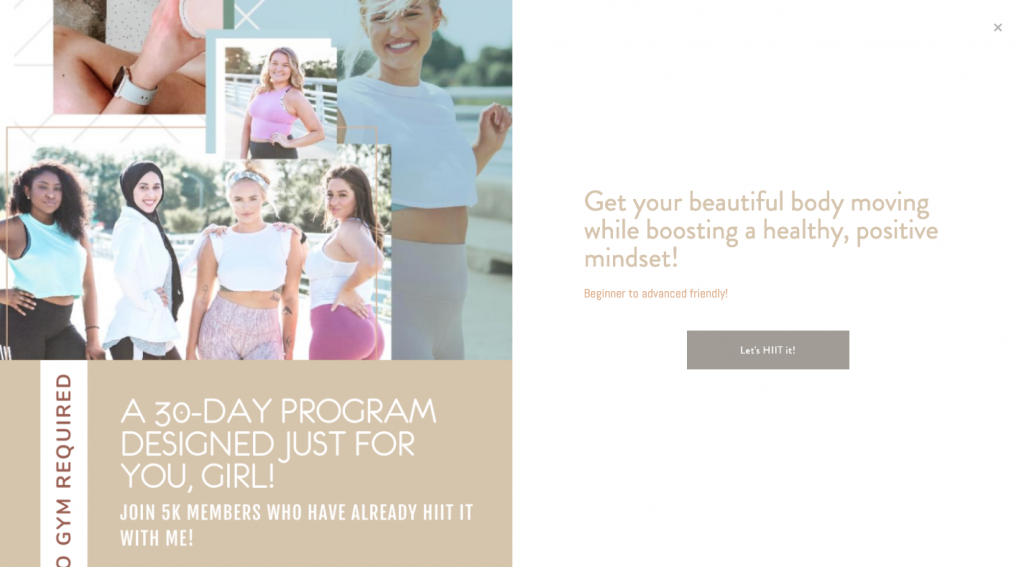
Of course, they’re not going to see this pop-up and think that. What they’re going to see is a 30-day HIIT program that’s been made just for them.
When crafting your own message — whether it’s on your website, in a Facebook ad, or through email — make sure it’s succinct but powerful. You want to get to the root of their pain but make it clear right away that there’s a light at the end of the tunnel… If only they take the next step.
Step 4: Use a sales page to collect leads
A well-written and beautifully designing landing page is where your leads are going to learn all about your offer. But here’s the thing: there are typically two kinds of leads who are going to see this page. So, your sales page is going to be used numerous times throughout this funnel.
This is the first time your prospective clients will encounter it:
Top-of-funnel (TOF) leads are ones who just entered the sales funnel. They’re in the early awareness and interest stages, but still need some convincing before they’re going to spend money with you.
And that’s okay. The sales page does a great job of educating them on everything they can accomplish by signing up with you. They’ll be glad you made it so easy for them to gather that information in one place. Like this:
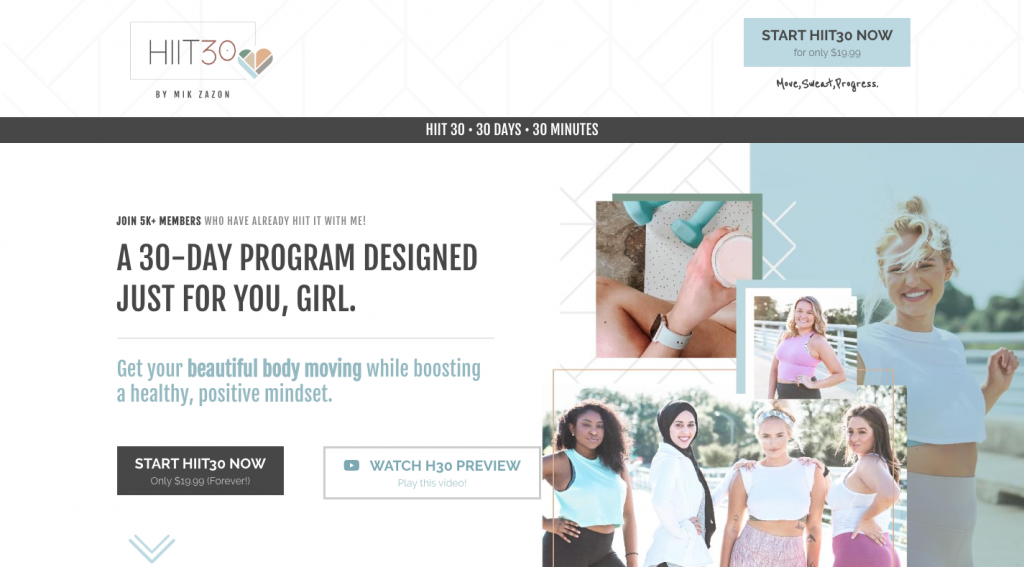
If they’re not prepared to take action, that’s cool, too. Because you’re going to show them a pop-up like this before they leave:
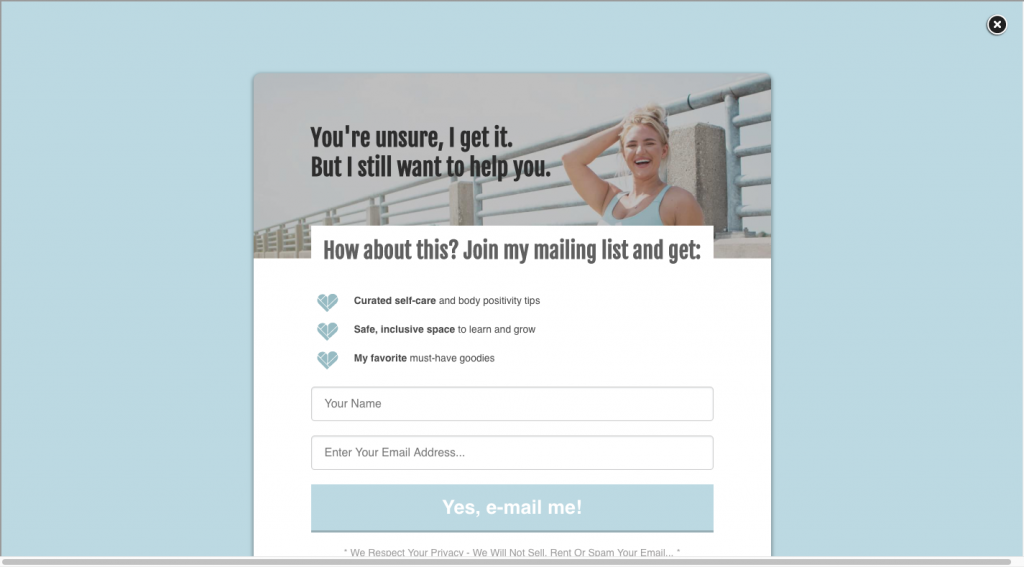
This is how your automated sales funnel will start weeding out bad-fit clients and push the good-fit ones deeper into the funnel.
Before setting this up, make sure you have a sales campaign ready to go for these leads. Pick your poison:
Will you use a drip email campaign where you diligently send them messages that continue to deliver valuable information, share your personal story and journey, and work on building trust with them?
Or will you use social media ads that remind them of what they’re missing out on by delaying the inevitable?
Again, the better you understand your ideal client, the easier it’ll be to determine the channels to run your sales campaign through.
Step 5: Use a sales page to sign up new clients
This is the final time your sales page is going to come into play. There’s no need to create a separate sales page for this step either. In fact, the familiarity with the page will help established leads feel more comfortable with the signup process.
Here’s what you need to know about this step:
Bottom-of-funnel (BOF) leads have reached the decision and action stages. They are primed and ready to buy thanks to your well-thought-out sales campaign.
Once they’re at this stage, your sales page is what leads them to your checkout or appointment booking process. So, you need to make sure it’s not only well-designed and chock full of compelling details, but that everything is automated and working.
Here’s an example from Coach Morgan:
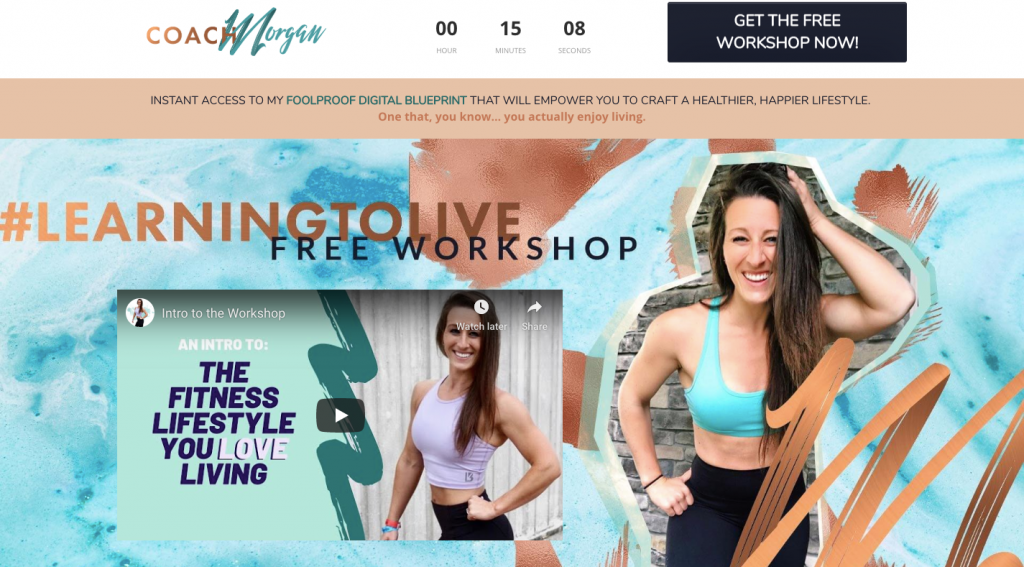
The video introduction and summary at the top of the page is a great way to quickly get buy-in from prospective clients. But if that doesn’t convince them, then the relatable message and beautiful graphics you share throughout the site will:
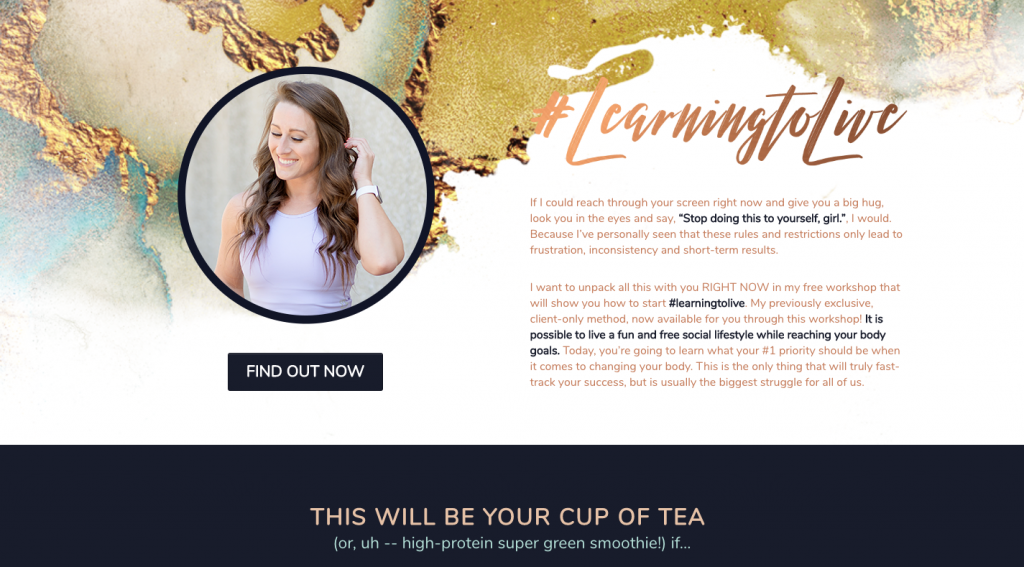
By the time they get to the bottom of the page, there’s no need to do any more convincing. All you need to do is give them a quick and pain-free way to sign up:
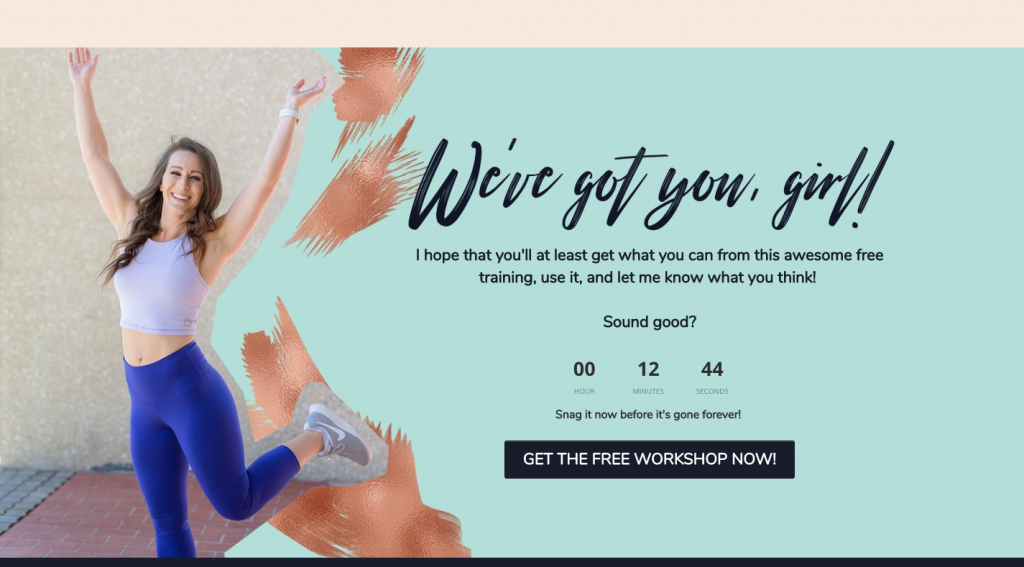
What’s particularly nice about this example is that Morgan’s sales funnel offer is for free training. It could very well end there, but it doesn’t.
Leads are then taken to this confirmation page:
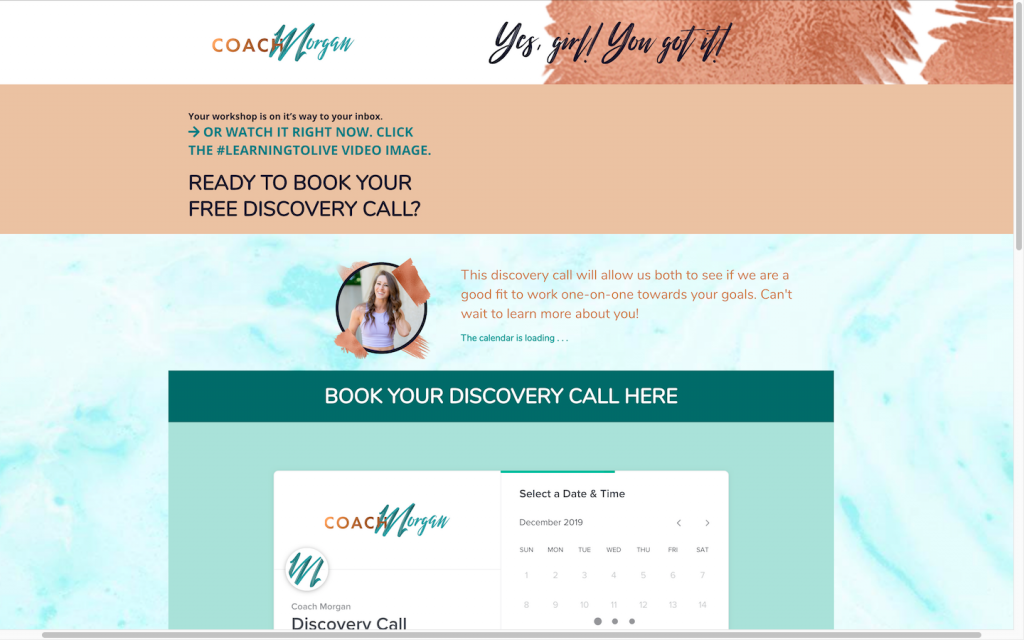
The very top of the page quickly addresses when and where they’ll receive their free training. Then, it quickly launches into an invitation to schedule a discovery call. This is like saying:
“Hey, I know how hard it is to try and do this on your own, so I’ll be here if and when you’re ready to level up!”
Once they’ve taken that additional step, it’s important to continue reaffirming their decision to work with you. And a great way to do this is with one last page (or email):
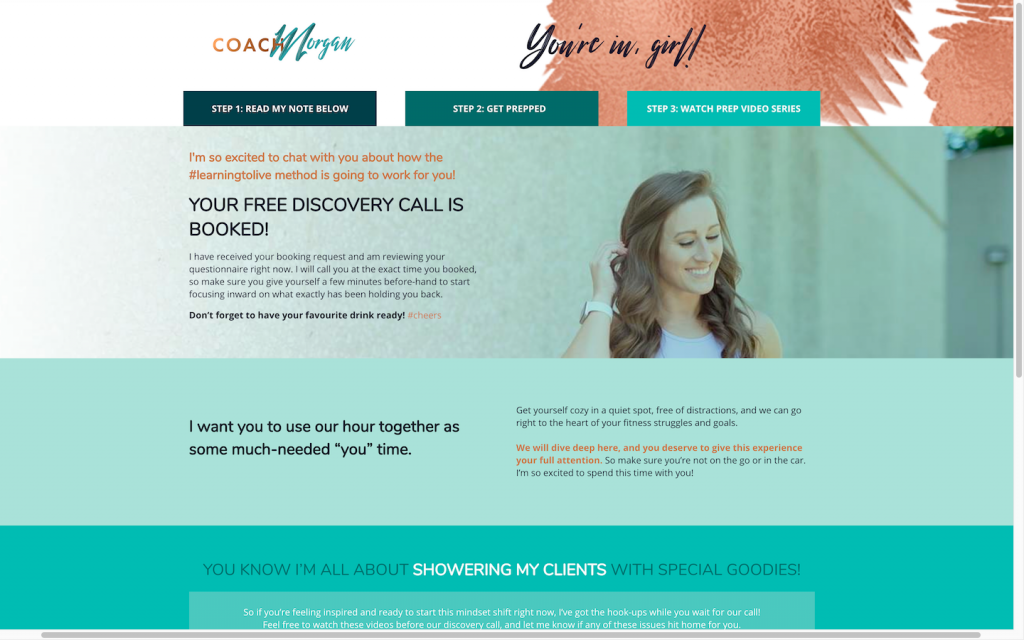
This one doesn’t ask them to fill anything else out or to buy anything. It simply gives you the chance to say:
“I can’t wait to work with you! I hope you’re ready!”
And that’s it. From start to finish, your website, sales page, and automated sales campaign will take care of turning interested leads into paying clients on your behalf. That’s pretty awesome, right?
Wrap-Up
As you can see, there’s a ton involved in building out a sales funnel. But make no mistake:
Once this system is in place, that’s the last time you’ll have to worry about it.
Your prospects will find your funnel, your automated messages will work to build a relationship with them, and your website will finish the job. That means you’ll have more time to spend with paying clients rather than worrying about when you’ll fill your next appointment slot or book enough attendees for that event you had planned.
The sales funnel does it all for you.
That said, a sales funnel takes a bit of finesse to create. And luckily for you, I have years of experience building successful, profitable, and automated sales funnels for my clients.
That’s why I created the Savvy Sales System, just for entrepreneurs like you! In it, I’ll provide you with all the resources and guidance you need to build the very best sales funnel for your business, plus all the marketing collateral to promote it!
Start attracting your best-fit clients while growing your business on autopilot!
Psst...before you go! Get our FREE e-book:
how to attract, delight and close more clients
PLUS GET DESIGN TIPS, ADVICE & FREEBIES DELIVERED TO YOUR INBOX
DOWNLOAD THE EBOOK
Ashley Gadd
Written By:
Ashley Gadd is an award-winning business brand strategist, website designer, and educator who helps clients turn their ideas into captivating and strategic brands that convert. Blending her background in nonprofit marketing with her education in design, Ashley offers customer-centric brand experiences that connect the visual and strategic dots providing her clients the tools to build a sustainable and profitable business they’re proud of.
Brand Strategist - Website Designer - Educator
Leave a Reply Cancel reply
Anything is possible. Explore more.
CONTENT MARKETING
Case Studies
BUSINESS STRATEGY
WEBSITE
BRANDING
Sales Funnels
Let's be Friends!
Connecting the design and marketing dots to create a visual story that captures your shine and shares your message and mission in style.
Use this worksheet to bring more clarity to your business! Let this be your first step before you tackle your ideal customer profile and buyer persona.
FIND YOUR NICHE WORKSHEET!
DOWNLOAD THE WORKSHEET
Stick Around!
and bring much-needed clarity to your business.
JOIN IN THE CONVERSATION